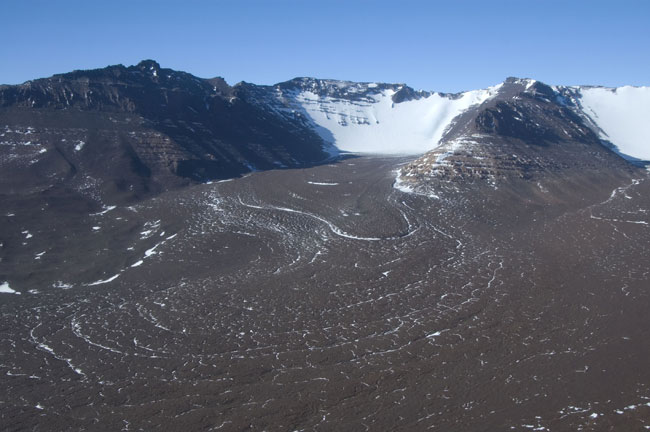Life Resurrected From Glaciers

Germs long frozen in glaciers may resurrect as Earth's warming climate melts ice, potentially speeding up the evolution of microbes, research now reveals.
Although Earth germs can apparently survive up to millions of years on ice, scientists added the harsh rigors of space make it unlikely that alien life or DNA frozen in comets would have survived to seed our world.
Also, while the new study shows that germs survive millions of years on ice, it remains to be seen whether there is any promise in cryonics, in which humans are frozen as "corpsicles" in the hopes of future resuscitation when disease cures might be more available. So far, nobody has been brought back although baseball great Ted Williams' remains reportedly are on ice (and Walt Disney's probably are not, despite rumors).
The oldest known ice on Earth lies frozen in Antarctica, in the Dry Valleys of the Transantarctic Mountains. The researchers melted five blocks of ice cut from rock-strewn glaciers there to discover entombed microbes 100,000 to 8 million years old. To avoid contamination of the ice with modern germs that would confuse results, the scientists took elaborate precautions, soaking the blocks in ethanol as an antiseptic and melting away the outer inches of ice using sterile water to decontaminate them.
The researchers found microbes in all the ice, more in the young than in the old. They also grew them out in the lab.
"The young stuff grew really fast," said Rutgers University marine microbiologist Kay Bidle, doubling in number "every couple of days." Until now, scientists didn't know whether such ancient, frozen life could be revived, he added.
The older samples, on the other hand, grew very slowly, doubling only every 70 days. Genetic analysis revealed their DNA had in fact deteriorated significantly, due likely to cosmic radiation blasting it to pieces over time.
Get the world’s most fascinating discoveries delivered straight to your inbox.
"There is still DNA left after 1.1 million years," Bidle said. "But 1.1 million years is the 'half-life'—that is, every 1.1 million years, the DNA gets chopped in half." He explained the average size of DNA in the old ice was 210 base pairs—that is, 210 units strung together. The average genome size of a bacterium, by comparison, is 3 million base pairs.
Still, while such ancient organisms might not survive such a long deep-freeze, pieces of their DNA could. This suggests that as global warming melts the ice, these ancient genes could flow into the seas, which living microbes could suck up and use "to improve themselves, potentially altering their communities significantly," Bidle said. Although it is unlikely ancient microbes or DNA would be harmful to humans, "it is something some researchers have highlighted the possibility of," he added.
Although these findings reveal ancient microbes and their DNA on Earth can tough out a few million years, they also suggest any potential alien life or genes hitchhiking on comets might not last to seed life on this planet. The germs or their DNA would face cosmic trips millions of years long from one solar system to another, and given the much higher level of cosmic radiation in space, "they'd yield DNA of no size whatsoever," Bidle told LiveScience.
Rutgers University oceanographer and study co-author Paul Falkowski concluded, "organisms in our solar system had to evolve here—they were not transported from planets beyond our solar system." The findings are detailed online in the Aug. 6 issue of the Proceedings of the National Academy of Sciences.
- VIDEO: Under Antarctic Ice
- Image Gallery: Ice of the Antarctic
- Top 10 Mysterious Diseases



